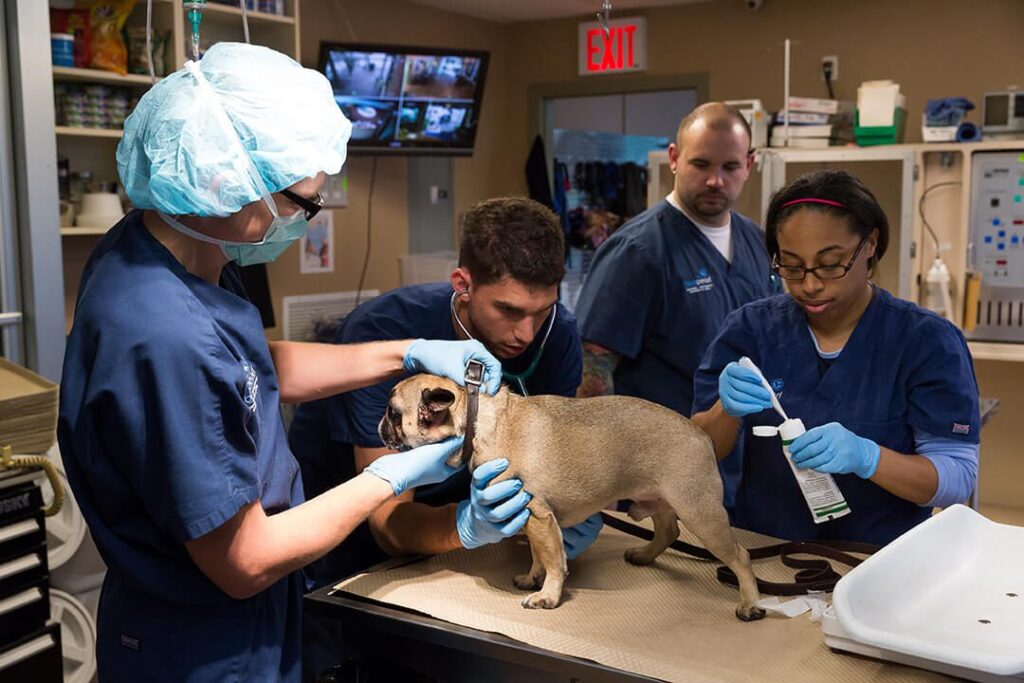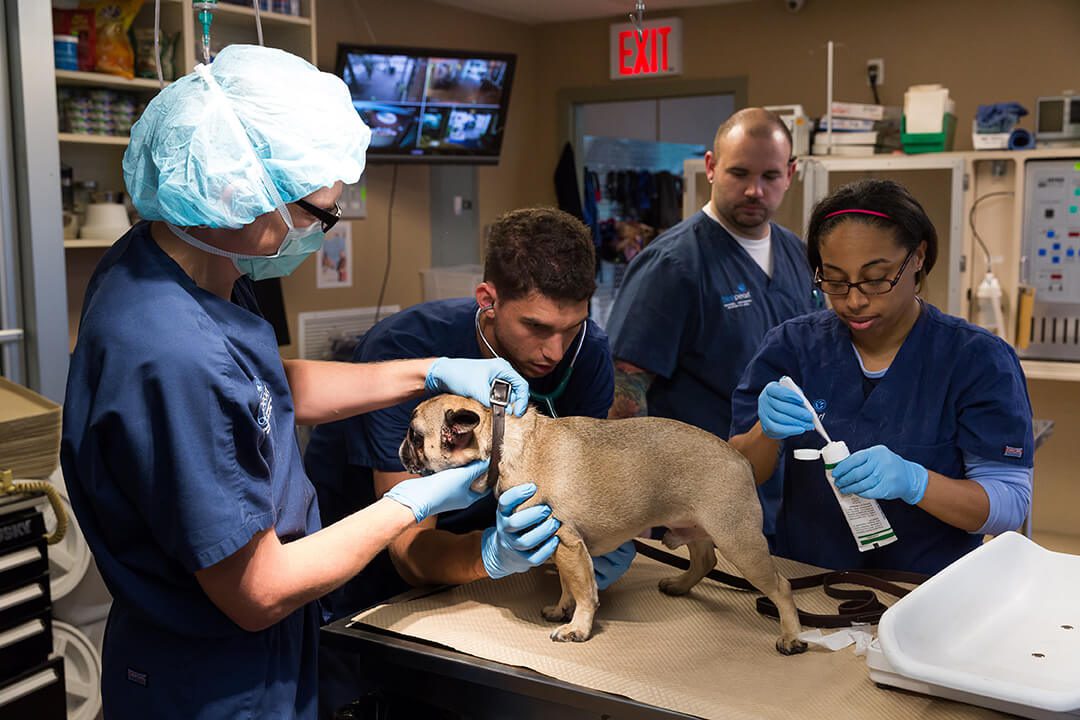
Navigating Animal Hospital Emergencies: A Comprehensive Guide
An animal hospital emergency can be a distressing experience for any pet owner. The sudden onset of illness or injury in a beloved animal companion often triggers panic and uncertainty. Knowing how to react, where to go, and what to expect can significantly improve the outcome for your pet. This comprehensive guide aims to equip you with the knowledge and resources necessary to navigate animal hospital emergencies effectively, ensuring your furry, scaled, or feathered friend receives the best possible care during a critical time. We’ll delve into recognizing emergency situations, preparing for a visit to the animal hospital emergency room, understanding treatment options, and exploring preventative measures to minimize the risk of future crises. From identifying symptoms that warrant immediate attention to understanding the triage process at an animal hospital emergency facility, this guide provides a roadmap for responsible pet ownership during times of urgent need.
Recognizing an Animal Emergency
Identifying an animal hospital emergency is the first and most crucial step. Not all health issues require immediate veterinary attention, but certain signs indicate a critical situation demanding prompt action. These include:
- Difficulty Breathing: Labored breathing, rapid panting, or blue-tinged gums are all signs of respiratory distress.
- Severe Bleeding: Uncontrolled bleeding from a wound or body orifice is a clear indication of an animal hospital emergency.
- Trauma: Injuries sustained from a car accident, fall, or attack require immediate veterinary evaluation.
- Seizures: Any seizure activity, especially if prolonged or recurring, warrants immediate attention.
- Loss of Consciousness: Unresponsiveness or collapse should be treated as an animal hospital emergency.
- Poisoning: Suspected ingestion of toxins, such as antifreeze, medications, or household cleaners, requires immediate veterinary intervention.
- Bloat (Gastric Dilatation-Volvulus): This life-threatening condition, common in large-breed dogs, causes abdominal distension and requires emergency surgery.
- Inability to Urinate or Defecate: Straining to urinate or defecate, or producing no urine or stool, can indicate a serious blockage.
- Severe Vomiting or Diarrhea: Persistent vomiting or diarrhea, especially if accompanied by blood or weakness, can lead to dehydration and electrolyte imbalances.
- Sudden Paralysis: Inability to move limbs or a sudden loss of coordination necessitates immediate veterinary evaluation.
If you observe any of these signs, contact your veterinarian or the nearest animal hospital emergency clinic immediately. Time is often of the essence in these situations.
Preparing for a Visit to the Animal Hospital Emergency Room
While an animal hospital emergency can be chaotic, taking a few preparatory steps can streamline the process and ensure your pet receives prompt and efficient care:
- Call Ahead: If possible, call the animal hospital emergency room to inform them of your impending arrival and the nature of the emergency. This allows them to prepare for your pet’s arrival and gather necessary resources.
- Gather Medical Records: If available, bring your pet’s medical records, including vaccination history, current medications, and any known allergies.
- Restrain Your Pet: Secure your pet in a carrier or on a leash to prevent them from escaping or injuring themselves or others. If your pet is in pain or agitated, use caution when handling them.
- Bring a Form of Payment: Be prepared to pay for the emergency services provided. Many animal hospital emergency clinics require a deposit or payment in full at the time of service. Inquire about payment options and financial assistance programs.
- Stay Calm: While it’s natural to feel anxious, try to remain calm and collected. Your pet will sense your stress, which can exacerbate their anxiety. Speak to them in a soothing voice and reassure them that you are there to help.
Understanding the Triage Process
Upon arrival at the animal hospital emergency room, your pet will undergo a triage assessment. This process involves a veterinary technician or veterinarian quickly evaluating your pet’s condition to determine the severity of their illness or injury and prioritize their treatment accordingly. Pets with life-threatening conditions will be seen immediately, while those with less critical issues may experience a wait. Understand that this prioritization is essential to ensure that the most urgent cases receive immediate attention.
During triage, the veterinary staff will ask you questions about your pet’s symptoms, medical history, and any recent events that may have contributed to their condition. Be prepared to provide accurate and detailed information to help them assess the situation effectively.
Common Emergency Treatments
The specific treatments administered in an animal hospital emergency setting will vary depending on the nature of the emergency. However, some common procedures and interventions include:
- Oxygen Therapy: Administered to pets experiencing respiratory distress.
- Fluid Therapy: Used to treat dehydration and electrolyte imbalances.
- Pain Management: Medications to alleviate pain and discomfort.
- Wound Care: Cleaning, bandaging, and suturing of wounds.
- Medications: Administration of antibiotics, anti-inflammatories, and other medications as needed.
- Surgery: Emergency surgical procedures to address internal injuries, blockages, or other life-threatening conditions.
- Diagnostic Testing: Blood tests, X-rays, and other diagnostic tests to help determine the underlying cause of the emergency.
The veterinary team will explain the recommended treatment plan and answer any questions you may have. Don’t hesitate to ask for clarification if you don’t understand something. [See also: Understanding Veterinary Costs]
Preventative Measures to Minimize Animal Hospital Emergencies
While not all animal hospital emergencies can be prevented, several steps can be taken to minimize the risk of your pet requiring emergency care:
- Regular Veterinary Checkups: Annual or bi-annual checkups allow your veterinarian to identify and address potential health issues before they become emergencies.
- Vaccinations and Parasite Prevention: Keeping your pet up-to-date on vaccinations and parasite prevention protects them from preventable diseases and infestations.
- Proper Nutrition: Feeding your pet a balanced and appropriate diet helps maintain their overall health and reduces the risk of certain health problems.
- Safe Environment: Pet-proof your home to remove potential hazards, such as toxic plants, medications, and cleaning supplies.
- Supervision: Supervise your pet when they are outdoors to prevent accidents, injuries, and exposure to toxins.
- Dental Care: Regular dental cleanings can prevent dental disease, which can lead to systemic health problems.
- Weight Management: Maintaining a healthy weight reduces the risk of obesity-related health issues, such as diabetes and joint problems.
Coping with the Stress of an Animal Hospital Emergency
Dealing with an animal hospital emergency can be emotionally taxing. It’s important to take care of yourself during this stressful time. Lean on your support network of friends and family, and don’t hesitate to seek professional counseling if needed. Remember that you are doing everything you can to provide the best possible care for your beloved pet. [See also: Grief After Pet Loss]
The Future of Animal Hospital Emergency Care
The field of animal hospital emergency medicine is constantly evolving, with advancements in diagnostic techniques, treatment protocols, and technology. Telemedicine is playing an increasingly important role in providing remote consultations and guidance during emergencies. Research continues to improve our understanding of animal diseases and develop more effective treatments. As pet ownership continues to rise, the demand for high-quality animal hospital emergency care will continue to grow, driving innovation and improvement in this critical area of veterinary medicine.
In conclusion, being prepared for an animal hospital emergency is a vital aspect of responsible pet ownership. By understanding the signs of an emergency, knowing how to prepare for a visit to the emergency room, and taking preventative measures, you can help ensure that your pet receives the best possible care during a critical time. Remember to stay calm, trust the veterinary professionals, and prioritize your pet’s well-being.

